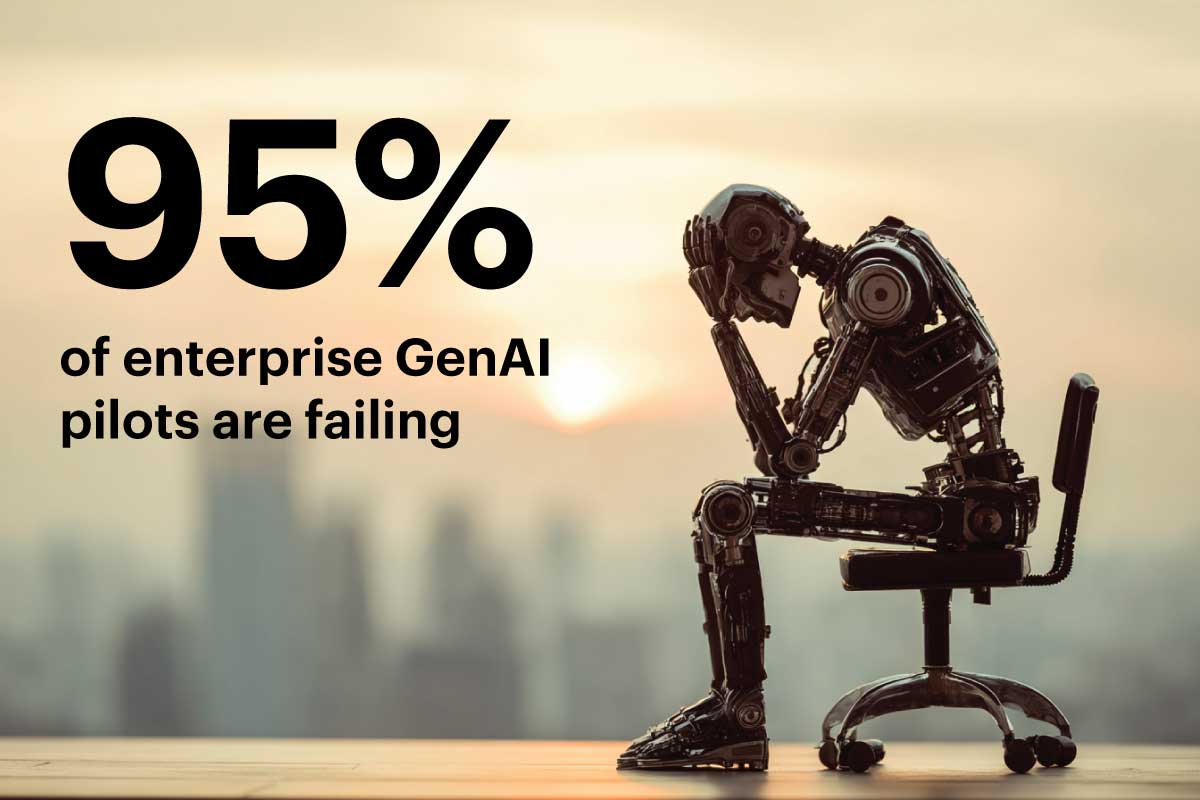
24 Aug They laughed when I said 95% of AI projects would fail… but then MIT proved me right
A frank message from Ram Menon, CEO of Avaamo
Last Tuesday MIT released a study that sent shockwaves through every boardroom in America.
95% of enterprise AI pilots are failing.
Tech investors who were celebrating billion-dollar AI investments suddenly went quiet. The whispers started: “Is this another bubble?”
But here’s what they missed—and what I’ve been telling our customers for months.
That 95% failure rate isn’t proof AI doesn’t work. It’s proof that most companies are trying to force revolutionary technology into systems built for the stone age.
I’ve watched this exact movie three times before
1995: “The internet is just a fad,” declared half the Fortune 500 CEOs. Where are those companies now?
2007: “Mobile phones in the workplace? Security nightmare!” screamed IT departments. They banned personal devices until… they couldn’t.
2010: “The cloud isn’t secure enough for enterprise data.” Cue endless proof-of-concepts and vendor fear-mongering. Today? 94% of enterprises use cloud services.
Same script. Same ending.
The secret the 5% discovered (and why it matters to you)
While 95% struggled, a small group cracked the code. MIT’s study reveals exactly what separated winners from losers:
They stopped trying to build it themselves.
Success rates jumped to 67% when companies bought complete solutions instead of cobbling together internal pilots. The winners partnered with AI-native companies who could implement at enterprise scale—fast.
They treated deployment as the real product.
While competitors played with chatbots and OpenAI accounts, the 5% focused on one thing: getting AI working in their actual business environment—like Wipro, who deployed to 200K+ employees, or Sentara, who got it right from day one. They chose partners with forward-deployed engineers who understood their constraints, not vendors with impressive capability checklists.
They obsessed over the boring stuff.
Most AI projects don’t die because the AI fails. They die because nobody figured out how to integrate with existing workflows. Your 15-year-old CRM system wasn’t designed for this. Your approval chains weren’t built for this. Your processes weren’t designed for this.
The winners spent as much time on change management as they did on the technology.
What this means for your company
In five years, AI will be invisible—like email or smartphones today. The difference between market leaders and laggards won’t be who had the best technology. It’ll be who had the courage to deploy properly while their competitors were still running pilots.
That MIT study everyone’s panicking about? It doesn’t prove AI is a bubble. It proves we’re exactly where we should be on day one of a 10-year transformation.
The platform shift always looks chaotic from the inside. It takes patience, precision, and the right partners.
But here’s what I know from watching three previous revolutions: The companies that move now—while everyone else is paralyzed by that 95% headline—won’t just survive the next decade.
They’ll own it.
Ram Menon is CEO of Avaamo, an enterprise AI company that has helped Fortune 500 companies successfully deploy conversational AI at scale.


